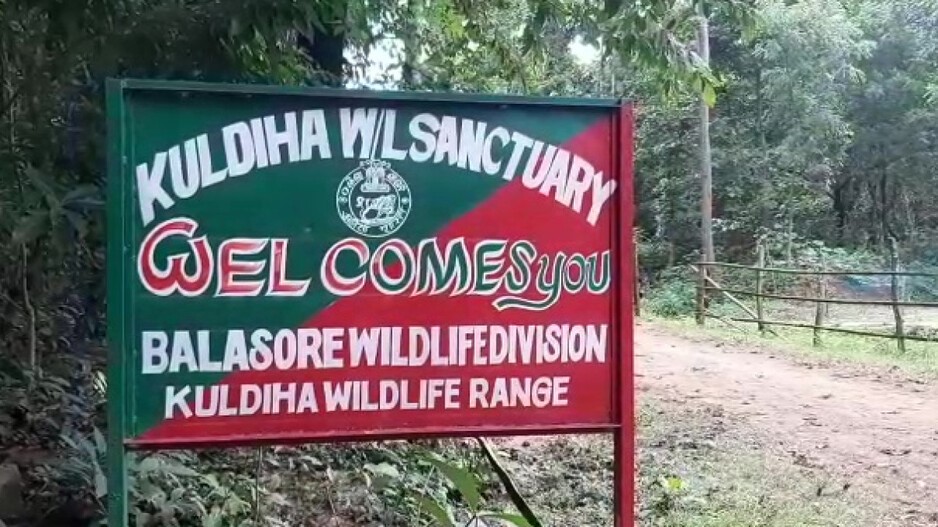Description

Disclaimer: Copyright infringement not intended
Context
- The National Green Tribunal (NGT) recently addressed a serious issue concerning the Kuldiha Wildlife Sanctuary, located in the Balasore district of Odisha.
- The NGT's intervention reflects its commitment to safeguarding the delicate balance between development and conservation.
Details
Mining Activities in the Eco-Sensitive Zone
- A complaint raised concerns about unauthorized mining activities within the eco-sensitive zone of the Kuldiha Wildlife Sanctuary.
- The applicant highlighted that 97 sand mining sources were leased out near the Similipal-Hadgarh-Kuldiha-Conservation Reserve, particularly in the Sukhuapata Reserved Forest area. The applicant contended that these quarrying activities violated the Forest (Conservation) Act, 1980, and could potentially harm the ecosystem and wildlife.
- The applicant also referenced a Supreme Court judgment (Binay Kumar Dalei & Others vs. State of Odisha & Others), stating that mining activities could only be permitted after implementing a comprehensive wildlife management plan and declaring the traditional elephant corridor as a conservation reserve.

About Kuldiha Wildlife Sanctuary
- Kuldiha Wildlife Sanctuary is situated in the northeastern part of Odisha, bordering the Simlipal National Park.
- Covering an expanse of 272.75 square kilometers, this sanctuary is a part of the Eastern Highlands moist deciduous forests ecoregion, boasting a diverse range of flora and fauna.
Geographical Context
- Situated in the Chota Nagpur Plateau region, Kuldiha Wildlife Sanctuary is strategically connected to the Simlipal National Park through the Sukhupada and Nato hill ranges.
- Its location within this verdant landscape adds to its appeal and ecological significance.
Ecological Diversity
- Kuldiha's lush environs are dominated by mixed deciduous forests where the majestic Sal tree reigns supreme.
- This sanctuary is a sanctuary for a variety of animals, including Tigers, Leopards, Elephants, Gaurs, Sambars, Giant Squirrels, Hill Mynas, Peafowls, Hornbills, and a multitude of migratory birds and reptiles.
Mayurbhanj Elephant Reserve
- A remarkable feature of Kuldiha is its association with the Mayurbhanj Elephant Reserve, extending across Simlipal, Kuldiha, and Hadgarh wildlife reserves.
- Locally referred to as Tenda Elephant Reserve, it forms a safe haven for these gentle giants.
Conservation Through Community-Based Ecotourism
- Recognizing the importance of sustainable conservation, Odisha's government adopted a community-based ecotourism model for Kuldiha.
- This model not only aids in the preservation of nature's pristine state but also contributes to the livelihoods of local communities and tribes residing within the sanctuary.
Unique Attractions
- The Kuldiha River and other water bodies within the sanctuary provide a lifeline for both wildlife and vegetation.
- The picturesque Duduma waterfall is one of the prime attractions, drawing tourists and photographers.

Conclusion
The NGT's proactive approach in addressing environmental concerns in Kuldiha Wildlife Sanctuary underscores its commitment to preserving the delicate balance between development and nature. These actions serve as a reminder of the importance of adhering to environmental regulations and guidelines to safeguard our natural heritage for future generations.
|
PRACTICE QUESTION
Q. Consider the following statements about Kuldiha Wildlife Sanctuary:
1. The sanctuary is situated in the Balasore district of Odisha, India.
2. It is linked with Simlipal National Park via the Sukhupada and Nato hill ranges.
3. Kuldiha Wildlife Sanctuary is primarily dominated by the Sal tree in its mixed deciduous forest.
4. The sanctuary is operated under a private-public partnership (PPP) model to promote ecotourism and conserve biodiversity.
How many of the above statements are correct?
A) Only 1
B) Only 2
C) Only 3
D) All 4
Correct Answer: D)
|
https://www.downtoearth.org.in/news/governance/daily-court-digest-major-environment-orders-august-17-2023--91228












